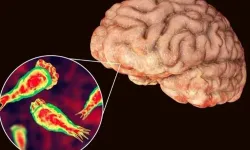Last year in Japan, the so-called flesh-eating bacteria was updated with 941 cases, beating the 2019 record of 894 cases. "Normal precautions such as washing hands and keeping the wound clean should be taken to prevent infectious diseases," said Takashi Nakano, a professor at Kawasaki University.
A record number of cases of a potentially fatal "flesh-eating disease" were reported in Japan in 2023, and health experts warned that the number could rise.
CASE RECORD
According to the National Institute of Infectious Diseases (NIID), the number of patients diagnosed with streptococcal toxic shock syndrome (STSS) had declined during the COVID-19 pandemic, but confirmed cases rose to 941 last year, surpassing the record of 894 cases set in 2019.
30 PERCENT RESULT IN DEATH
An estimated 30 percent of STSS cases result in death because symptoms can suddenly worsen.
There is concern that the disease could spread further in Japan as variants with high virulence and infectivity have been confirmed here.
On January 17, the Ministry of Health asked local governments to analyze samples from STSS patients to identify variants.
CAUSES THROAT INFECTION AMONG CHILDREN
STSS is mainly caused by a bacterium called streptococcus pyogenes, better known as group A streptococcus, which is known to cause throat infections, especially among children.
OVER 30 YEARS OF AGE CAUTION
In some cases, especially in adults over the age of 30, the infection can be fatal. Most patients who contract STSS are senior citizens.
WHAT ARE THE SYMPTOMS OF STSS?
The first symptoms of STSS are sore throat, fever, diarrhea, vomiting and lethargy.
But some patients died within hours due to multiple organ failure or respiratory problems.
WHY IS THE BACTERIA CALLED "FLESH-EATER"?
The bacterium is called a flesh-eater because it causes necrosis of a band of tissue surrounding the muscles of patients.
It usually enters the bloodstream and spinal fluid, where bacteria are normally undetectable. This leads to a sudden decrease in the functioning of many organs.
HOW IS FLESH-EATING BACTERIA TRANSMITTED?
The infection process is still unknown, but it is known that the bacteria is transmitted to patients through wounds on the hands and feet.
Takashi Nakano, professor of infectious diseases at Kawasaki Medical School, said, "There are many things we don't know, such as why the bacterium occurs quickly. Normal precautions such as washing hands and keeping the wound clean should be taken to prevent infectious diseases."
Nakano also added that if symptoms appear different from normal, medical treatment should be started immediately.















